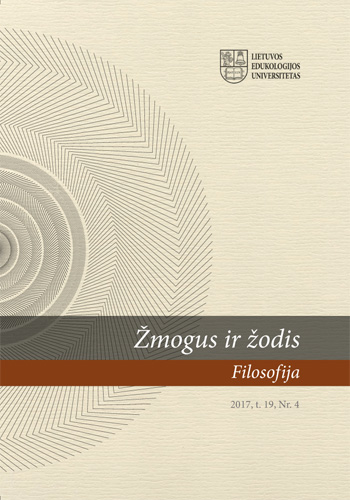Vaizduotės samprata Maxo Schelerio ir Vosyliaus Sezemano estetikoje
The Concept of Imagination in the Aesthetics of Max Scheler and Vasily Seseman
Author(s): Dalius JonkusSubject(s): Aesthetics, Contemporary Philosophy, Phenomenology, Ontology
Published by: Vytauto Didžiojo Universitetas
Keywords: Scheler; Sesemann; imagination; correlation; phenomenology; aesthetic; body;
Summary/Abstract: In this article, I make a comparative analysis of Scheler’s and Seseman’s conceptions of imagination and show that there is a correlation between imagination and world phenomenain their aesthetics, which sets the a priori requirements for the activity of the imagination. First, I address the correlation problem in Husserl’s and Scheller’s phenomenology. Then I analyze the conception of imagination in Scheler’s philosophy. Finally, I discuss the conception of imagination in Seseman’s aesthetics. Max Scheler emphasizes the correlative connection of spiritual activity with the world. He links the concept of imagination to the practical being in the world. In Seseman’s aesthetics, the role of embodied imagination in artistic creation and the perception of aesthetic objects is also considered. Both authors argue that the connection between imagination and the essential modes of the world’s givenness is guaranteed by the mode of embodied imagination. Both authors acknowledge that imagination is related to unconscious desires and drive. They state that the schematisms of imagination express the style of the perception of the world. Scheller notes that imagination reveals essential aspects of the expression of phenomena, and thus justifies the possibility of abstractions. Seseman develops this thesis and analyzes the role of abstraction and the creation of symbols – schemes in the creative process of imagination.
Journal: Žmogus ir žodis
- Issue Year: 19/2017
- Issue No: 4
- Page Range: 81-92
- Page Count: 12
- Language: Lithuanian

